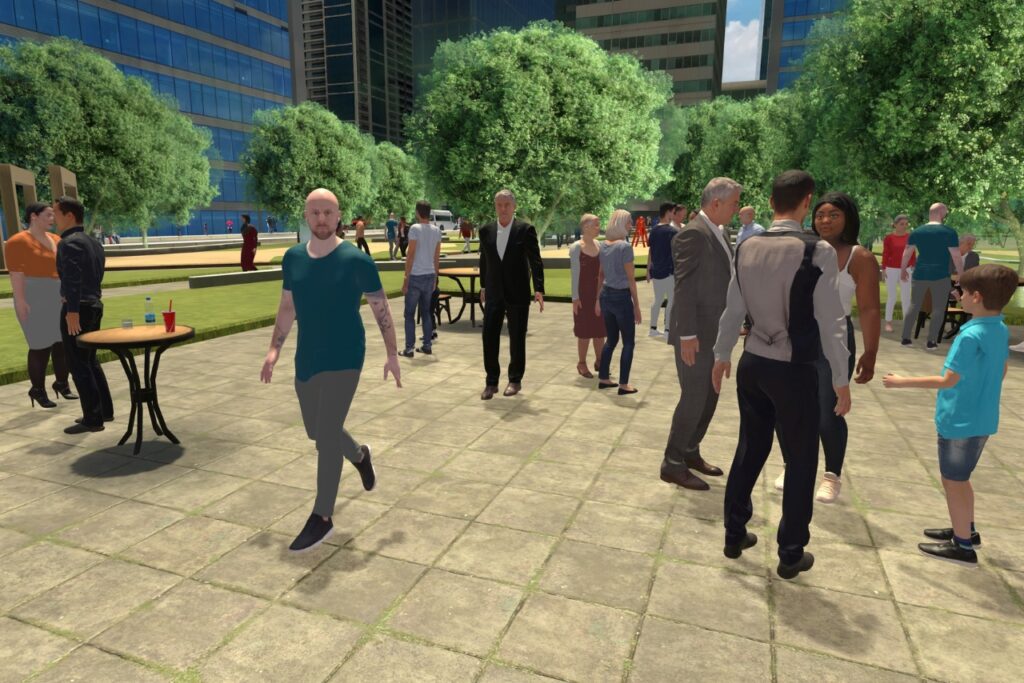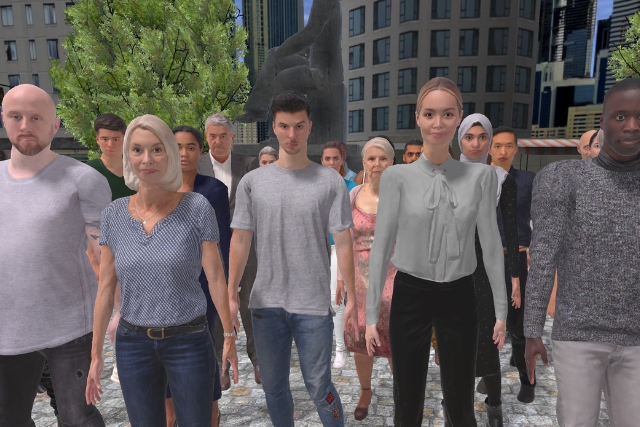Why such efficacy ?
1. Immersion
The user will be immersed in virtual environments designed to recreate anxiety-provoking social situations from everyday life.
2. Cognitive restructuring
The user will unlearn negative reactions, such as catastrophic thoughts (“Everyone thinks I’m useless”), and rebuild positive thought patterns (“I belong here”).
3. Repetition
Through repeated exposures, these patterns will become quickly and permanently ingrained in your mental functioning.
4. Progressiveness
The gradual increase in the difficulty of the environments will allow the user to progressively desensitize to the anxiety experienced and regain confidence in their abilities.
5. Personalization
With Artificial Intelligence, they will be supported and encouraged in a personalized way throughout the exposures.
Receive the C2Care method for free, combining Artificial Intelligence and Virtual Reality !
The AI revolution !
The different social contexts!
Fear of public speaking
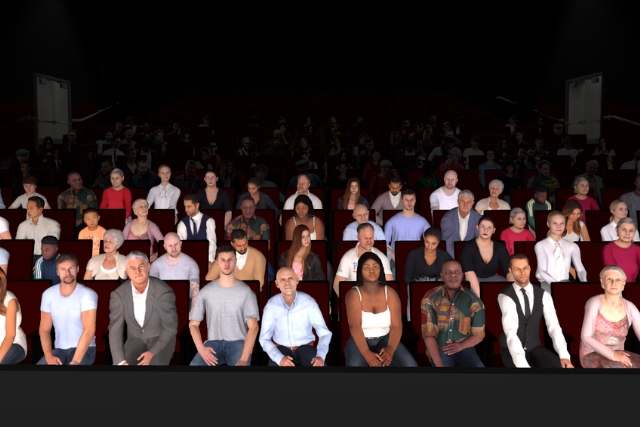
Fear of public speaking
Speaking in public is always a challenging task, but for individuals with glossophobia, it can feel like a nightmare. This fear is often tied to the worry of being judged or making a mistake in front of an audience. Social anxiety amplifies this fear, significantly impacting self-confidence.
Virtual reality allows users to face public speaking situations and get accustomed to them, while addressing fears such as blushing or losing control.
Public places
In public places, anxiety related to encountering people, feeling watched, sensing danger, or fearing judgment can be overwhelming and significantly affect daily life. This feeling of discomfort can become overwhelming, gradually reducing outings until it significantly limits social life.
This immersive approach helps reduce the anxiety associated with social phobia and gradually builds self-confidence, enabling better social integration and more active participation in daily activities.
Public places
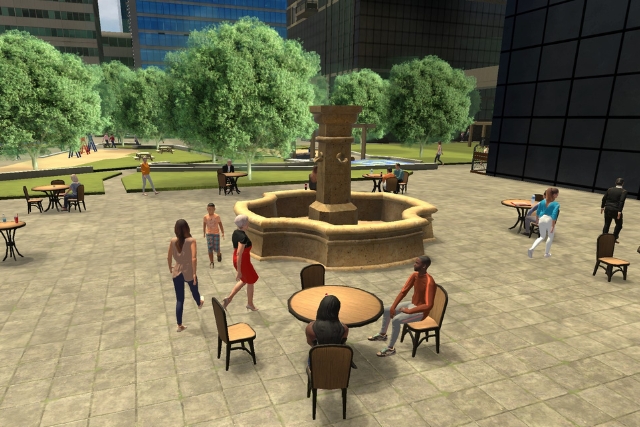
School phobia
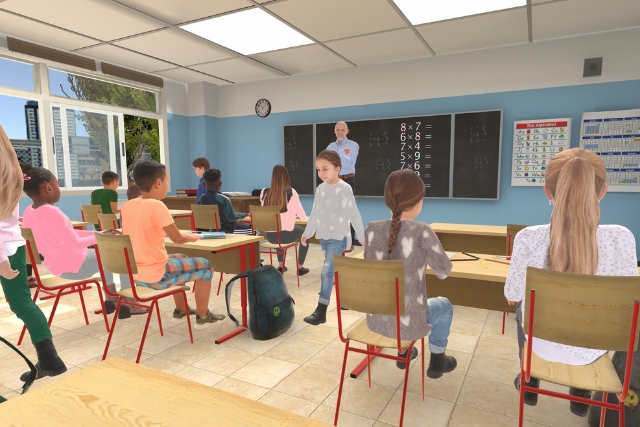
School phobia
Social anxiety can have a significant impact on schooling, whether in children or young adults. Activities essential to a calm and productive school life—such as giving a presentation, raising a hand in class, or making friends—can provoke intense anxiety in many students.
With virtual reality, it is possible to work on overcoming the fear of public speaking and engaging with new people by adjusting the number of listeners, their attitudes, and the personalities of those you interact with.
Social events
Informal settings, such as gatherings with friends, can trigger significant anxiety. Engaging with new people, integrating into a group, or simply speaking in front of friends can be daunting.
Through artificial intelligence and virtual reality exposure, individuals can directly address behaviors and thought patterns specific to these situations, fostering a fulfilling social life.
Social events
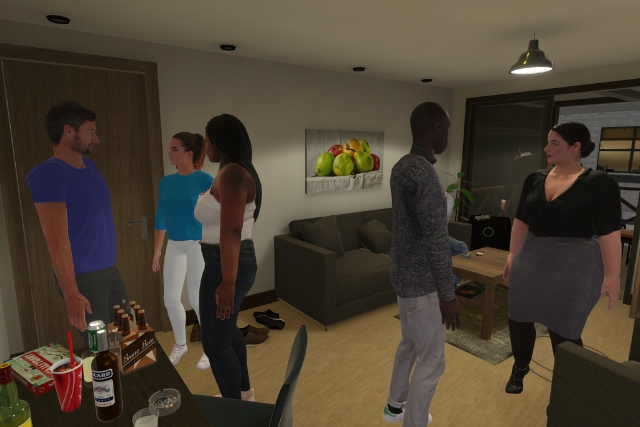
Romantics date

Romantics date
Romantic dates can be anxiety-inducing, often involving the fear of being judged or failing to meet the other person’s expectations. Uncertainty about how the meeting will unfold, conversation topics, or potential awkward moments can intensify feelings of insecurity.
Virtual reality exposure, combined with artificial intelligence, offers a safe and supportive space to practice one-on-one conversations, helping users overcome the anxiety linked to dating.
Lives changed thanks to our method.
Feel free to customize your exhibitions for a fully immersive experience !
Each environment can be personalized by precisely choosing the situation to be exposed to :
Context : Social anxiety can occur in professional or informal situations, one-on-one or in groups. Users can modify the type of scenario, such as a house party, conference room, lecture hall, or job interview.
Physical characteristics : To better suit individual preferences, users can select the gender and age of the virtual interlocutor for one-on-one interactions.
Public place density : Whether in public transport (subway, plane, bus) or a supermarket, the crowd density and behavior of the people can be adjusted, ensuring gradual exposure to anxiety-inducing situations.
Conversations : Thanks to artificial intelligence, users can engage in conversations with virtual characters in these environments, offering complete interaction customization and in-depth work on managing anxiety.
They testify to the effectiveness of C2Care !

Simon - User
I am a very shy person who is afraid to speak in public. However, thanks to the virtual reality therapy of C2Care, I managed to overcome my fear of speaking in public as the sessions progressed. I can’t thank C2Care enough for their help that changed my daily life.

Jordan Fannis - Psychologist
I saw in the field what it brings to my patients, satisfaction, and then with a little bit of gamification, we enjoy going to work. It creates a kind of connection between my patients and me.

Hervé M - User
For my part, it is the best therapy among all those I have experienced so far with real situations regarding (for my part) glossophobia. The psychologist was really listening to me and helped me a lot in the fight against my phobia.

Marcus F - User
I decided to go back to school and take my exam. Going back to school was terrifying. With this program and the support of my psychologist, I was able to prepare myself for this return to class. I was able to face the exam room. Perfect for learning how to manage stress.

Laura - User
Thanks to my therapist and the C2Care teams who helped me overcome my social phobias. Today after 4 months of therapy I am released.

Dr Bouchard - Psychologist
I think it’s an extraordinary opportunity for patients, people who suffer from these disorders to finally have access to treatments that we can dose to tame our fears.
Do you need further information or have any specific questions ?
Our environments in image









